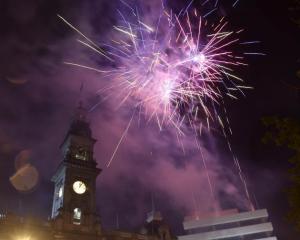It was only about 15 years ago or so that Aucklanders who migrated to Queenstown would praise the ease of living and the easy commutes. The road from Frankton to the CBD had just been redeveloped and traffic, while at times busy, was manageable.
How times have changed.
The upgraded road was almost immediately inadequate as Queenstown entered — with only one pause — a long, sustained and accelerating growth spurt.
These traffic issues have been accentuated further in the past two years by the leap in tourist numbers and because so many travel independently in rental vehicles.
Tail-backs at the BP roundabout at Frankton are becoming longer and longer, and the road from the airport and to and from the centre of town are becoming jammed regularly, particularly at peak commuter times.
Queenstown Lakes District Council, the Otago Regional Council and the New Zealand Transport Agency have missed the bus, so to speak, in providing adequate transport infrastructure.
And the problems are only going to become worse as visitor numbers soar and Queenstown flourishes as a resort of international standing in both summer and winter.
Such is the traffic congestion that it is beginning to, and will more in the future, put off people both living in Queenstown or travelling there, especially into the centre of town.
The relevant authorities should respond to such matters with vigour and insight, and have this week shown clear signs they are.
The announcement this week of a radical overhaul for Wakatipu transport is welcome.
As Mayor Jim Boult said: "Public transport is essential to ensuring our transport network doesn’t come to a grinding halt."
Behind the words is the outline of a decisive plan, one which will cost ratepayers (and the Government) money.
That is the modern actuality of public transport in this country.
It is subsidised through the NZTA and, in this case, through Otago Regional Council transport rates.
Bus fares only meet part of the cost.
In this case, too, the Queenstown Lakes District Council is looking at contributing about $500,000 a year.
Mr Boult also speaks of a "tough reality check", including likely hikes in downtown parking charges.
The council wanted to make public transport the "no-brainer" option to double the number of passenger trips to a million within a year.
That is the ambition and urgency required.
Provisions need to be made in current annual plans immediately, so consultation can take place and new services brought in.
Mr Boult said he wanted the new service to start in July, even if tweaks and improvements take place during the year.
The cautious regional council must join him and his council in catching this bus and going along for the ride.
Cars are convenient and comforting.
Drivers have their own spaces and are not tied to timetables.
Buses, meanwhile, are seen by some in this country as the transport for the young and the poor.
Fortunately, the workers of Wakatipu are younger on average than elsewhere and higher proportions come from overseas.
They are less likely to be as influenced by that prejudice.
As well, given the cost of living in Queenstown and the number of jobs in retail and hospitality, bus options cheaper than cars will be more attractive than in most other centres.
There is nothing like crises to promote change.
Queenstown, with $2 fares proposed and more regular buses over longer periods of the day has a chance to push decisively for changed attitudes, even if buses take time to win favour.
At the same time, thought and action needs to turn to other transport options, including provision for bicycle or ferry commuting.
Annual car growth on the Frankton Rd is into double digits and this cannot be sustained. Public transport has to be a critical part of Queenstown’s future.












